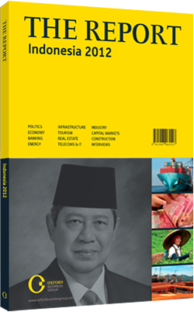Business destination: Expanding the quantity and range of MICE facilities
Enjoying a period of sustained economic growth and heightened overseas investor interest throughout the global downturn, Indonesia has recently seen itself move up the league table of international business destinations. This has been good news for its meetings, incentives, conferences and exhibitions (MICE) segment, with the government keen to promote what the country has to offer on this score.
FOCUS ON MICE: Indeed, MICE promotion is explicitly part of the Master Plan for the Acceleration and Expansion of Indonesian Economic Development 2011-25 (MP3EI). The MP3EI includes the Bali-Nusa Tenggara Corridor among its six economic corridors around Indonesia that are to receive special focus. Each corridor highlights particular industries, with Bali-Nusa Tenggara focused on tourism and with a special emphasis on the region as a MICE destination. This includes cruise ship and yacht-based MICE activity, bringing the variety of this island chain into business tourism packages.
The MP3EI recognises the existing strength of Bali as a MICE destination, as the island has traditionally shared most of the market with Jakarta. Yet there are also some newcomers to the circuit, notably in Medan, northern Sumatra, where the JW Marriott has led the city’s bid for MICE business, and in Manado, which hosted the 2009 World Ocean Summit. Other contenders include Lombok, which had its first international MICE fair in 2010 and should see its 10,000-person-capacity Nusa Tenggara Barata Convention Centre completed in 2012, along with the Narmanda and Lombok Raya hotels’ convention centres, with 3000- and 2000-person capacities, respectively. Elsewhere, Jogjakarta has its 17,090-sq-metre Jogja Expo Centre, complemented by a string of five- and four-star hotels with MICE facilities. In addition, Java, Bandung and Surabaya are seeking to boost their MICE potential.
CAPITAL GAINS: As the political and economic centre of the country, Jakarta remains a dominant force in the MICE segment. According to the Jakarta Tourism Board (JTB), for the most recent period comprehensively surveyed, from 2004 to 2006, around 55% of all passenger arrivals in Jakarta were there on business, with around 10% explicitly for MICE and the remainder for leisure. Growth in the raw numbers visiting Jakarta has also been steady, with 1.39m foreign passengers moving through the city’s main airport, Soekarno-Hatta (CGK), in 2009, 1.82m in 2010. Arrivals at CGK for the January-September 2011 period alone came to 1.4m.
The capital has considerable hotel capacity for MICE visitors, too. The most recent figures from the government’s statistics department show total bed capacity of 37,046 in 2009, and a room capacity of 26,179. Much of this is low-star or non-star accommodation though.
Room occupancy rates have been rising in the higher-end establishments, according to the JTB, with occupancy of five-star rooms in the peak month of July up from 60.02% in 2009 to 64.78% in 2010. Four-star occupancy rose from 49.47% to 53.11% over the same period. At the same time, outlets for eating and drinking during MICE events have increased, with JTB figures showing the number of restaurants in the capital up from 2089 in 2009 to 2480 in 2010, while the number of bars went up from 576 to 646.
CAPACITY: In terms of capacity for MICE events, the major international chains present in the capital all offer conference facilities. These include the JW Marriot, Indonesia Kempinski, Shangri-La, Ritz Carlton, Gran Hotel Melia, Mandarin and Grand Hyatt, while other five-star conference offerings include the Hotel Borobudur, Mulia Senayan, Sultan Hotel, Bidakara Hotel and Grand Sahid Jaya. The largest venue though, remains the Jakarta Convention Centre, built in 1992. With a plenary hall that can accommodate 5000, it also has a variety of assembly halls that can host a total of 3500 people.
The government has prioritised infrastructure and human resources issues as key planks of its general economic development drive. The benefits for local economies of a successful MICE industry are also now more well known. MICE visitors typically spend four or five times more than leisure visitors per day of their stay.
You have reached the limit of premium articles you can view for free.
Choose from the options below to purchase print or digital editions of our Reports. You can also purchase a website subscription giving you unlimited access to all of our Reports online for 12 months.
If you have already purchased this Report or have a website subscription, please login to continue.

